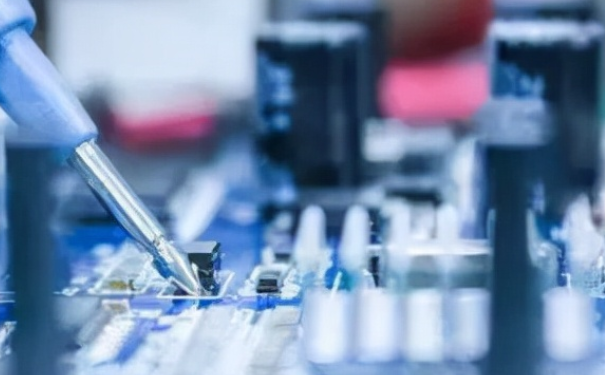What are the common mistakes in manual welding of electronic components?
Date:2022-06-16 15:37:52 Views:2732
Soldering iron welding, also known as manual welding, is the basic means of tin welding technology. Due to its simple and flexible operation and strong adaptability, it still continues to play a role and is constantly improving and developing today when automatic welding technology is widely used. Welding technology is one of the most critical technologies for the production of complete electronic products. The quality of welding can represent the level of assembly technology of enterprises to a certain extent. The following is a brief description of common manual welding errors for your reference.

*Common wrong operation in manual welding
Improper use of welding methods will lead to serious appearance disqualification or even scrapping. In order to prevent the occurrence of disqualification in the soldering process, these bad habits in manual welding must not be present.
1. Excessive force. The heat transfer effect cannot be accelerated by pressing the solder joint with the soldering iron head.
2. Improper welded thermal bridge. The soldering iron head shall not touch the pad before applying solder.
3. Wrong size of soldering iron head. For example, using too small a soldering iron head on a large pad will result in insufficient solder flow or cold solder joints.
4. Excessive temperature. Too high temperature of soldering iron head will lead to pad warping, affect the quality of solder joint and damage the substrate.
5. Improper use of flux. Excessive use of flux can lead to corrosion and electron migration.
6. Transfer welding. Apply solder to the soldering iron head before touching the pad.
7. Unnecessary decoration and repair. Do not repair if the standard is met.
*Five step training to improve welding technology
As a training method for beginners to master manual soldering technology, the five steps are effective. The correct five steps are:
1. Prepare for welding - keep the iron head clean.
2. Heating the weldment - touch the soldering iron to the welding point and keep the soldering iron heating all parts of the weldment.
3. Melt solder - when the weldment is heated to a temperature that can melt the solder, place the welding wire in the solder joint to melt and wet the solder joint.
4. Remove solder - when a certain amount of solder is melted, remove the solder wire.
5. Remove the soldering iron - after the solder has completely wetted the solder joint, remove the soldering iron at 45 degrees.
*Precautions for manual welding
1. Master the heating time. The shorter the time, the better, on the premise that the solder can wet the weldment.
2. Maintain proper temperature. Keep the soldering iron head in the appropriate temperature range. The general experience is that the soldering iron head temperature is 50 ℃ higher than the solder melting temperature.
3. It is wrong to heat the solder joint with a soldering iron. It will cause damage to the weldment. For example, the welding points of potentiometers, switches and connectors are often fixed on the plastic components. The result of force application is easy to cause component failure.
*Maintenance of soldering iron
1. Do not turn on the soldering iron core for a long time to heat it and burn it. Turn off the power in time when it is not in use. This can prolong the service life of the soldering iron core.
2. In the process of using electric soldering iron, including each welding completion and before power off, the soldering iron head should always be wrapped with a layer of tin. In short, it should always be protected by a layer of tin to avoid direct contact between the soldering iron head and the air, which is the fundamental to avoid oxidation of the soldering iron head.
The above is the related content of "electronic components welding operation" brought by the core creation test. I hope it can help you. We will bring more wonderful content later. The company's testing services cover: electronic component testing and verification, IC true and false identification, product design and material selection, failure analysis, function testing, factory incoming material inspection, tape braiding and other testing items. Welcome to call Chuangxin testing, we will serve you wholeheartedly.




 Weixin Service
Weixin Service

 DouYin
DouYin
 KuaiShou
KuaiShou





















